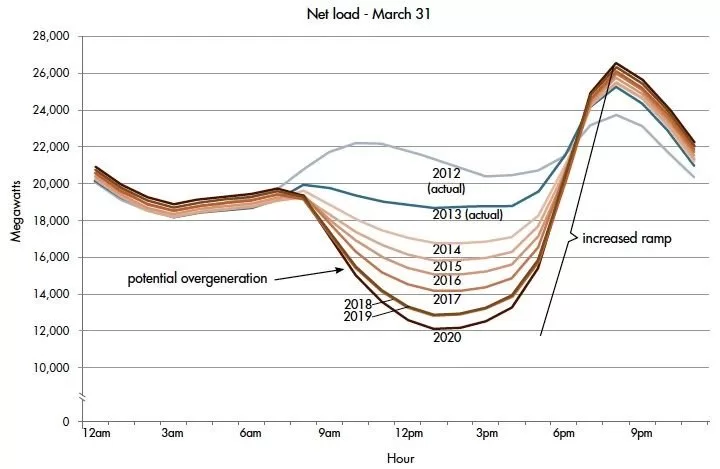What is the duck curve?
The “duck curve” is a term used to describe a graph that shows the difference between electricity demand and electricity generation from renewable energy sources, particularly solar power, over the course of a day.
The curve is named for its resemblance to a duck, with a deep dip in the middle of the day and a steep rise in the late afternoon and early evening. The curve shows that as solar panels generate more electricity during the day, traditional power plants have to reduce their output to match the decreased demand. However, as the sun sets and electricity demand peaks, traditional power plants have to ramp up their output quickly to meet the increased demand.
The duck curve is a challenge for grid operators, who must balance the supply and demand of electricity in real-time to avoid blackouts or other disruptions to the power grid. It has become more significant as the use of renewable energy sources such as solar and wind power has increased, leading to greater fluctuations in electricity generation throughout the day.

How does a virtual power plant solve the duck curve?
A virtual power plant (VPP) can help to solve the duck curve by providing a way to balance the supply and demand of electricity in real-time. A virtual power plant is a network of distributed energy resources (DERs), such as solar panels, wind turbines, and batteries, that are connected and managed as a single power plant.
The VPP can respond to changes in electricity demand and supply by adjusting the output of the DERs in the network. For example, during periods of high demand, the VPP can dispatch power from the batteries and other energy storage systems in the network to help meet the increased demand. Similarly, during periods of high solar generation, excess electricity can be stored in the batteries for later use.
By aggregating and coordinating the output of multiple DERs, a VPP can help to smooth out the fluctuations in electricity generation and demand that contribute to the duck curve. This can help to reduce the need for traditional power plants to ramp up and down their output, improving the overall efficiency of the power grid and reducing greenhouse gas emissions. Additionally, VPPs can provide a valuable source of grid stability and reliability, especially as more renewable energy sources are integrated into the grid.